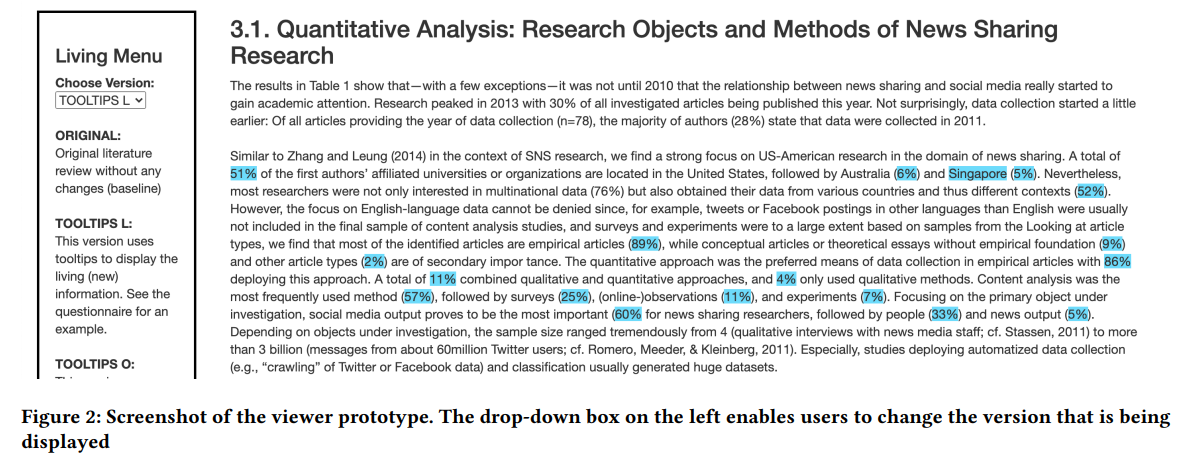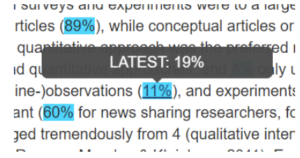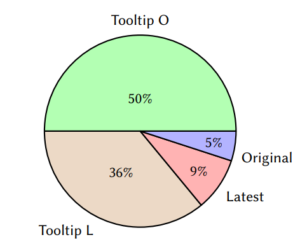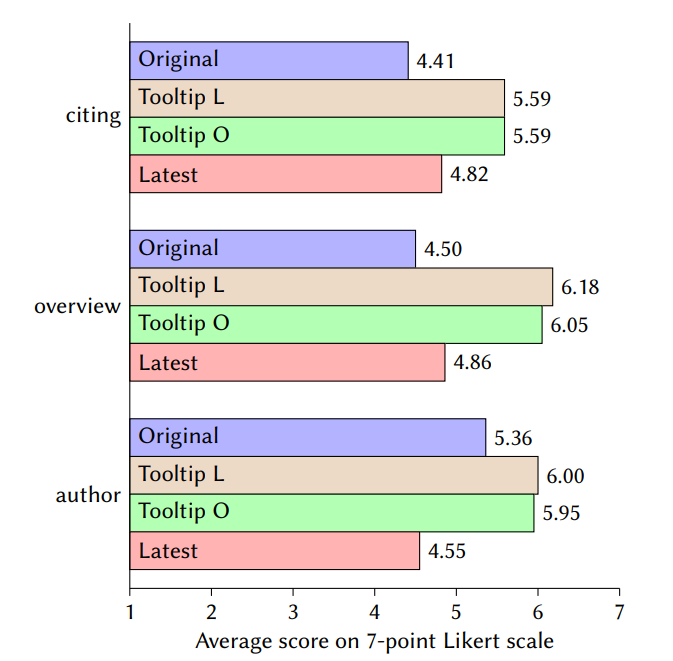User Interface of a Living Literature Review
The NI members delved into the practicality and acceptance of living literature reviews among scholars. The study introduced a prototype system that allowed literature reviews to be updated with new findings post-publication, using Linked Data technologies. Figure 1 below shows a living literature review looks like, with the different viewing options selectable on the left, called “Tooltips”. From most “traditional” to most “living”, the viewing options are as follows:

Figure 1. Living reviews viewer prototype (highlights show the “living” parts).
- Option 1 (Original) displays a publication as it was published, without any living elements.
- Option 2 (Tooltips L) shows the original publication. However, in this version, the elements that have living information available are highlighted. And when the user moves the cursor across them a tooltip will show the living information, as shown in Figure 2:

Figure 2. Option 2 (Tooltip L) showing more recent figures when the user hovers over the original number
- Option 3 (Tooltips O) provides similar functionality, but this version displays highlighted living information by default, with the original information appearing when the cursor is moved across it.
- Option 4 (Latest) is a fully living version of the document, displaying all the latest contributions registered in the system. This version does not contain any form of highlighting that indicates which elements are living.
Overall User Reception

Figure 3. Overall sser-preferred versions
The prototype was evaluated by 22 academic participants, who interacted with various versions of a literature review presented in the living format. The feedback was predominantly positive, with many appreciating the ability to access the most current information alongside the original content. Users favored interactive versions that used tooltips to display updates, indicating a preference for a blend of traditional and living elements. See figure 3:
Preferences by Use-case
Participants were also asked take the perspective of different users of such living reviews. First, the perspective of a researcher getting an overview of a topic, then a researcher citing a topic, and a researcher writing a paper in this format. The questions were respectively:
- Assuming you are a researcher reading this review to get an OVERVIEW of the topic, how satisfied would you be with the different versions?
- Assuming you are a researcher looking for a good background reference on the topic to CITE in an article, how satisfied would you be with the different versions?
- Assuming you are an AUTHOR of a review paper, how satisfied would you be with it being published in the different versions?
Figure 4 below shows the preferences from each perspective. Overall, the results show in each case that the two interactive versions using tooltips and highlighting receive better scores than the versions showing only the original or only the latest version. But there was a small increase in preference for the living versions in the OVERVIEW role, and a small increase in preference for the original version in the AUTHOR role, when compared to the citing role.

Figure 4. Version preference by use-case
The authors also asked participants who should be contributing to the “living” part of these reviews, adding up-to-date figures and data. The possible answer options were:
- Only the original authors
- Authors approved by the original authors
- Researchers with verified credentials
- Anyone.
Researchers with verified credentials or authors approved by the original authors came on top (35.6% each) followed by the original authors and anyone (13.6% each). In the open-ended section of the survey, one participant’s feedback was that a living review asks “a lot of the reader in terms of trusting the system (are the new numbers correct? Were they peer-reviewed of checked properly? etc”.
Conclusion: A Step Towards Dynamic Knowledge Synthesis
The study concluded that living literature reviews hold significant promise for the future of academic publishing. By enabling continuous updates, they can serve as a dynamic repository of knowledge, evolving with the field. The positive response from the academic community suggests a readiness for this innovative approach, which could revolutionize how we synthesize and interact with scientific literature.

